The Arts
Montessori Art Materials, PDF Downloads
Montesori Art Materials, Art Step 1 Level 2, Age 3 to 6
Montessori Art Materials, Step 2 Level 1, Age 3 to 6
..
Montessori Art Materials, Step 2 Level 2, Age 3 to 6
..
Introduction to Art in the Montessori Method
“Art belongs to the whole world and the barriers of nationality vanish before it”
Mommy It’s a Renoir – Art Step 1, Level 1 Lesson Activity
Montessori Art Lesson Activity Series in 8 Steps – Ages 3 to 6
Art Appreciation – Style
Art is an outward expression of an inner development and the Montessori programme encompasses various preparatory exercises to guide this inner development and encourages the outward expression to take a variety of forms.
Montessori Art Materials Art Step 3 Level 1 Cards Age 3 to 6
Montessori Art – Art Step 3 Level 1 Age 3 to 6 : Category: The Arts, Downloadable PDF.
Mommy It’s a Renoir – Art Step 1, Level 2 Lesson Activity
Montessori Art Lesson Activity Series in 8 Steps – Ages 3 to 6
Art is an outward expression of an inner development and the Montessori programme encompasses various preparatory exercises to guide this inner development and encourages the outward expression to take a variety of forms.
Mommy It’s a Renoir – Art Step 1, Level 3 Lesson Activity
Montessori Art Lesson Activity Series in 8 Steps – Ages 3 to 6
Art is an outward expression of an inner development and the Montessori programme encompasses various preparatory exercises to guide this inner development and encourages the outward expression to take a variety of forms.
Mommy It’s a Renoir – Art Step 2, Level 1 Lesson Activity
Montessori Art Lesson Activity Series in 8 Steps – Ages 3 to 6
Art is an outward expression of an inner development and the Montessori programme encompasses various preparatory exercises to guide this inner development and encourages the outward expression to take a variety of forms.
Mommy It’s a Renoir – Art Step 2, Level 2 Lesson Activity
Montessori Art Lesson Activity Series in 8 Steps – Ages 3 to 6
Art is an outward expression of an inner development and the Montessori programme encompasses various preparatory exercises to guide this inner development and encourages the outward expression to take a variety of forms.
Mommy It’s a Renoir – Art Step 2, Level 3 Lesson Activity
Montessori Art Lesson Activity Series in 8 Steps – Ages 3 to 6
Art is an outward expression of an inner development and the Montessori programme encompasses various preparatory exercises to guide this inner development and encourages the outward expression to take a variety of forms.
Montessori Art Materials Art Step 4 Cards Age 3 to 6
Montessori Art – Art Step 4 Age 3 to 6 : Category: The Arts, Downloadable PDF.
Montessori Art Materials Art Step 5 Cards Age 3 to 6
Montessori Art Materials Art Step 6 Cards Age 3 to 6
Montessori Art Materials Art Step 7 Cards Age 3 to 6
Mommy It’s a Renoir – Art Step 3, Level 1 Lesson Activity
Montessori Art Lesson Activity Series in 8 Steps – Ages 3 to 6
Art is an outward expression of an inner development and the Montessori programme encompasses various preparatory exercises to guide this inner development and encourages the outward expression to take a variety of forms.
Mommy It’s a Renoir – Art Step 3, Level 2 Lesson Activity
Montessori Art Lesson Activity Series in 8 Steps – Ages 3 to 6
Art is an outward expression of an inner development and the Montessori programme encompasses various preparatory exercises to guide this inner development and encourages the outward expression to take a variety of forms.
Mommy It’s a Renoir – Art Step 4 Lesson Activity
Montessori Art Lesson Activity Series in 8 Steps – Ages 3 to 6
Learning the Names of Famous Artists
Art is an outward expression of an inner development and the Montessori programme encompasses various preparatory exercises to guide this inner development and encourages the outward expression to take a variety of forms.
Mommy It’s a Renoir – Art Step 5 Lesson Activity
Montessori Art Lesson Activity Series in 8 Steps – Ages 3 to 6
Learning the Names of Famous Paintings
Art is an outward expression of an inner development and the Montessori programme encompasses various preparatory exercises to guide this inner development and encourages the outward expression to take a variety of forms.
Mommy It’s a Renoir – Art Step 6 Lesson Activity
Montessori Art Lesson Activity Series in 8 Steps – Ages 3 to 6
Learning about the Schools of Art
Art is an outward expression of an inner development and the Montessori programme encompasses various preparatory exercises to guide this inner development and encourages the outward expression to take a variety of forms.
Mommy It’s a Renoir – Art Step 7 Lesson Activity
Montessori Art Lesson Activity Series in 8 Steps – Ages 3 to 6
Learning More about the Schools of Art
Art is an outward expression of an inner development and the Montessori programme encompasses various preparatory exercises to guide this inner development and encourages the outward expression to take a variety of forms.
Mommy It’s a Renoir – Art Step 8 Lesson Activity
Montessori Art Lesson Activity Series in 8 Steps – Ages 3 to 6
Art is an outward expression of an inner development and the Montessori programme encompasses various preparatory exercises to guide this inner development and encourages the outward expression to take a variety of forms.

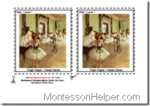
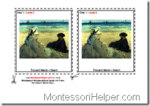

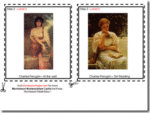


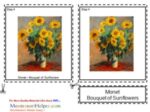


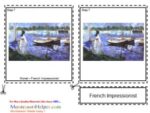
 '
'